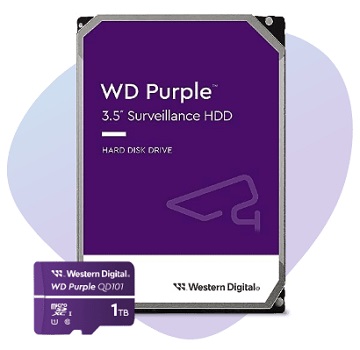Whilst technological breakthroughs and the adoption of digital technologies have brought a new era of progress, it can sometimes be hard for the untrained eye to recognise cutting-edge innovations in every-day life. However, smart cities are a key field where new technologies, such as smart video, directly and visibly, raise living standards. Western Digital explores this topic further.
 Smart cities use information and communication technologies to improve operational efficiency, share information with the public and provide a better quality of local authority services.
Smart cities use information and communication technologies to improve operational efficiency, share information with the public and provide a better quality of local authority services.
There’s also an important security element to smart cities. ‘Smart’ video or cameras utilise artificial intelligence (AI) algorithms and deep learning (DL) to analyse visual data in real-time and can dispatch orders from a hub to AI-powered devices faster than a human can process. Going further than just providing data, smart technologies can actually enable the devices to deploy intelligent insights.
Smart video is also being deployed in connected cities to deliver critical assistance to help reduce crime. Business owners, for example, need security cameras to help protect their property, reduce shoplifting, and monitor employee or customer incidents. On a larger scale, real-time video analysis is also capable of identifying and differentiating between objects, for example, distinguishing humans from animals and alerting the relevant people or systems if they are in a prohibited location or place.
The process behind smart video
Smart cameras need to ‘learn’ to recognise objects and actions and classify the identified actions into categories such as anomalous or normal. This is where AI and DL are needed for training and learning; DL needs to analyse a tremendous amount of data to be highly accurate. The development of higher video resolutions, such as 4K, is key here, enabling CCTV cameras to capture more data in high quality and from various angles, making analysis easier and empowering the smart video future.
The smart video sector is going through a transitional phase for recording video at scale: it has moved away from recording raw data from a standard camera to carrying out analysis on the AI-enabled camera itself. In the past, the data analysis was only possible at a centralised location, such as a data centre; however, the rise of on-board AI chips used in smart city technology allows the analytical load to be distributed. The ability to distribute the work is crucial when working at the scale of a smart city, enabling the data to be processed more quickly at the endpoints.
As AI and 4K rise in adoption on smart video cameras, higher video resolutions are driving the demand for more data to be stored on-camera. There are many more types of cameras being used today, such as body cameras, dashboard cameras and new Internet of Things (IoT) devices and sensors. Video data is so rich nowadays, you can analyse it and deduce a lot of valuable information in real-time, instead of post-event.
The role of storage
As a result, storage is critical to the evolution and efficient working of smart video systems. Smart video architectures require innovative storage technologies, which deliver needed flexibility, performance, capacity and reliability. Robust on-board storage must be specially designed to meet the needs arising from multi-streaming devices, on-device deep learning systems and AI-training solutions.
Storage solutions, like Western Digital’s WD PurpleTM Pro line, have evolved to provide high data transfer and write speeds, as well as the capacity to ensure world-class video capture. Western Digital has a strong history of innovation, going back to the origins of both hard disk drive technology and flash technology. The company works closely with market and innovation leaders in smart video to develop a deep understanding of today’s and tomorrow’s advances in AI-enabled architectures.
WD Purple Pro is engineered with advanced capabilities needed for high-end smart video solutions, including cameras, NVRs (network video recorders), and back-end video analytics servers. It is purpose-built for 24x7 operating environments and rated for high endurance and demanding AI workloads. Western Digital provides storage technology that protects and delivers video data to help systems prevent loss, improve situational awareness, and increase business efficiency. Adding these AI capabilities with WD Purple Pro ultimately helps deliver a smarter, more efficient, and data-driven world.
Storage-enabled AI
Improved workload and performance are important in ensuring that drives can keep up with the demands of AI functionality, including pattern matching and object recognition. By combining video stream recording optimisation with top-tier durability and capacity, smart video solutions and AI analytics have the necessary foundations to operate at optimum levels for thousands of hours.
Behind the innovation
Smart video plays a vital role in increasing public safety such as promoting safe driving practices by monitoring fleet movements to detecting flaws and deviations in a product line to avoid potentially dangerous products. Home security systems such as smart protection and alert systems also benefit from the role of smart video.
However, the success of smart video relies upon a robust and resilient storage architecture that can effectively keep up with the heavy workloads. As smart video use cases proliferate throughout security and logistics landscapes, the hidden data storage complexities shouldn’t be forgotten.